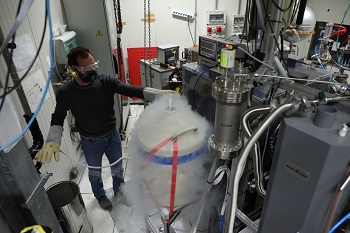20Ne(p,γ)21Na
PI: Antonio Caciolli, Sandra Zavatarelli
Astrophysical motivation:
The NeNa-MgAl cycles are relevant to the synthesis of Ne,Na, and Mg istopes: the 20Ne(p,γ)21Na is the slowest reaction and the therefore the step maker of the NeNa cycle. Existing uncertainties on the 20Ne(p,γ)21Na severely affect the estimated elements production. In particular, such uncertainties affect the amount of produced 22Na, a stellar γ-ray signature, and 22Ne, an important neutron source in the s-process, via the 22Ne(α,n)25Mg. Proton capture on 20Ne nuclei may occur in different stellar scenarios such as red giants stars, asymptotic giant branch stars, novae, and massive stars, if the temperature reaches T = 0.05 GK.
Experimental aims:
Aim of the experiment at LUNA 400 is to push the direct measurements down to 250 keV, assessing the strength of two important resonance at 366 keV and at -5.4 keV, in the center of mass system. The direct capture component will also be constrained.
Experimental setup:
The experiment is based on a gas target system associated to two high purity germanium detectors, shielded by 5 cm of copper and 25 cm of lead. Environmental radon gas diffusion is prevented by enclosing the shielded detectors inside a radon box.


